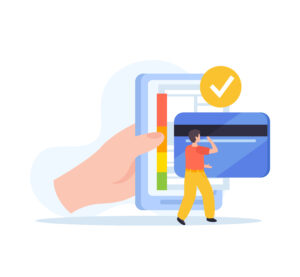Risk Reporting: From Spreadsheets to Modern Dashboards

Your vendor risk spreadsheet has 47 tabs. Half of them are outdated. Nobody’s sure who owns the master version. When the CFO asks which vendors can access customer data, you spend 20 minutes searching before admitting you’ll need to get back to them. This isn’t sustainable, and your risk reporting system shouldn’t work this way. Third-party breaches jumped 49% in 2024, affecting 61% of companies at an average cost of $4.88 million per incident. However, organizations using modern risk reporting platforms reduced vendor assessment time by 78% while catching threats spreadsheets miss entirely.
Here’s how to make the transition without disrupting your current operations.
Week 1: Extract What Actually Matters from Your Spreadsheets
Before you touch any new tools, understand what you’re really tracking. Open every spreadsheet tab and identify the data points people actually use versus the ones that just accumulate.
Create four lists:
Your critical vendors (those who access sensitive data, support operations that can’t fail, or handle regulated information). When HealthEquity’s cloud provider was breached in July 2024, exposing 4.5 million records, it happened because a vendor with critical access wasn’t being actively monitored.
Your current metrics (security scores, assessment dates, contract terms, insurance requirements, access levels). Write down which ones executive teams ask about and which ones nobody’s looked at in six months.
Your pain points (Where do you waste the most time? Which questions can’t you answer quickly? What breaks during audits?). When Truist Bank’s debt collection vendor was breached in 2024, their team spent days answering questions that should have taken minutes.
Your stakeholders (Who needs vendor risk data? Procurement, IT, security, legal, business units? What questions does each group ask?).
This audit reveals what your new system actually needs to do. Most organizations discover they’re tracking 50+ data points but only 8-10 drive decisions.
Week 2: Design Your Minimum Viable Dashboard
Don’t try to replicate your entire spreadsheet system. Build something simpler that solves your biggest problem first.
Pick one use case to solve:
Can’t answer “which vendors are highest risk right now?” Build a risk scoring view.
Spending hours compiling audit responses? Build a compliance status tracker.
Missing contract renewals and insurance expirations? Build an obligations calendar.
Unclear who owns vendor relationships? Build a vendor ownership directory.
Sketch out exactly five metrics that would solve your chosen use case. A financial services firm reorganized their risk reporting by business criticality instead of alphabetical vendor lists and cut assessment time 67%. They tracked: vendor criticality tier, current security score, days since last assessment, open critical findings, and contract expiration date. That’s it.
Real-time monitoring only works if you’re monitoring the right things. Organizations that automated scoring improved detection accuracy by 45% because they focused on predictive metrics instead of historical data.
Week 3: Set Up Your Data Flow
Your new system fails if it requires manual updates. Map how data will flow automatically.
Identify your source systems:
Where do vendor contracts live? (Contract management system, shared drives, legal department files)
Where do security assessments come from? (Security team tools, questionnaire responses, external ratings services)
Where are compliance documents stored? (Vendor portals, email attachments, compliance platforms)
Who maintains vendor contact information? (Procurement, IT, individual business units)
Build simple integrations first. If your contract management system can export to CSV on a schedule, start there. If your security team runs BitSight or SecurityScorecard, pull those ratings via API. If vendors submit documents through email, create a shared folder that feeds your dashboard.
When American Express discovered a third-party merchant processor leaked customer card data in March 2024, organizations with integrated systems identified other at-risk vendors within hours. Those using spreadsheets spent days manually searching.
The global risk management market is growing at 13% annually toward $35.9 billion by 2032 because integration eliminates the manual work that makes traditional risk reporting feel impossible.
Week 4: Build Your First Dashboard View
Use whatever tool makes sense for your budget and technical capabilities. Mature GRC platforms offer sophisticated features, but many organizations start with business intelligence tools they already own.
Your first view should show:
Vendor name and criticality tier (Critical, Important, Standard)
Current risk status (Red/Yellow/Green based on your criteria)
Key dates (Last assessment, next review, contract expiration)
Owner (Who’s responsible for this relationship)
Quick actions (Links to detailed profiles, assessment tools, contact information)
Organizations using automated systems reduced vendor assessment time from 15-20 hours to under 2 hours per vendor. That’s because dashboards eliminate the time spent finding information and let you focus on analyzing it.
Cybersecurity topped organizational concerns in 2024, with 72% of organizations reporting significant impacts. Your dashboard should surface security issues immediately, not quarterly.
Week 5: Test with Real Scenarios
Before rolling out broadly, pressure-test your system with situations you’ve actually faced.
Run these exercises:
An executive asks which vendors can access customer financial data. Can you answer in under 5 minutes?
A vendor reports a security incident. Can you immediately identify other vendors with similar access or infrastructure dependencies?
An auditor requests evidence of vendor oversight. Can you pull assessment history, findings, and remediation actions for any vendor?
A contract renewal is coming up in 30 days. Does anyone get notified automatically, or does it still depend on someone remembering to check?
This reveals what’s missing. When you can’t answer these questions quickly, you know exactly what to add next.
Week 6: Expand Gradually
Once your first use case works, add the next one. Not everything at once.
Common expansion paths:
Start with risk scoring, then add compliance tracking, then add contract management, then add incident response views.
Start with critical vendors, then add important vendors, then add standard vendors.
Start with security metrics, then add financial metrics, then add operational metrics.
Among FTSE organizations, 87% now highlight risk trends in external reports, up from 81% in 2021. They didn’t build comprehensive risk reporting systems overnight. They started focused and expanded as capabilities matured.
What to Avoid
Don’t replicate your spreadsheet chaos. If something doesn’t drive decisions, don’t track it just because you always have.
Don’t wait for perfection. A simple dashboard answering three questions is infinitely more useful than a complex system launching “eventually.”
Don’t ignore your users. If stakeholders won’t use your dashboard, they’ll create shadow spreadsheets and you’re back where you started.
Don’t forget about alerts. Dashboards only work if problems reach the right people automatically. Configure notifications that actually get seen.
89% of organizations have experienced or expect audit findings related to third-party risk management they cannot promptly resolve. The issue isn’t awareness. It’s execution. Build something you’ll actually maintain.
Making It Stick
The difference between spreadsheets and dashboards isn’t just technology. It’s whether risk reporting becomes something your team checks proactively or only opens when auditors ask.
Schedule weekly 15-minute reviews where someone looks at the dashboard and takes action on what they see. Make it part of vendor onboarding that risk profiles get created before contracts are signed. Include dashboard metrics in monthly leadership updates so executives expect to see them.
Your spreadsheet worked when you had 20 vendors. You probably have 200 now. Some will be breached this year. The question isn’t whether to upgrade your risk reporting. It’s whether you do it before or after your next $4.88 million incident.





